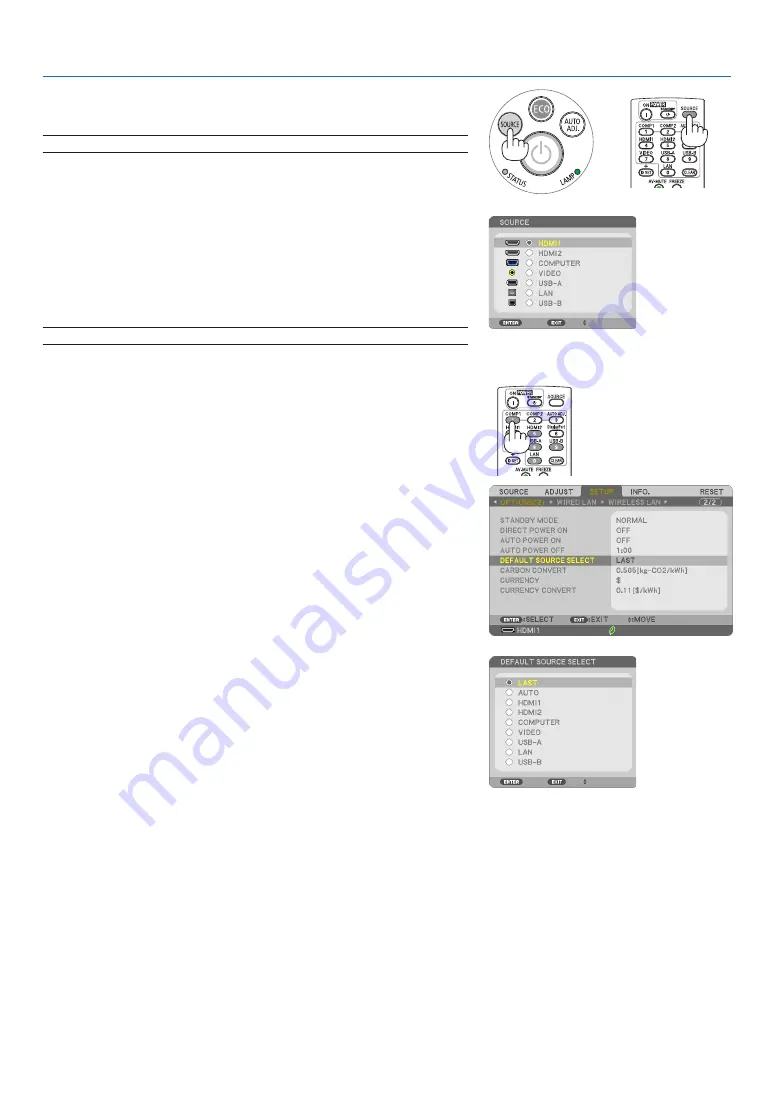
14
2. Projecting an Image (Basic Operation)
❹
Selecting a Source
Selecting the computer or video source
NOTE: Turn on the computer or video source equipment connected to the projector.
Detecting the Signal Automatically
Press the SOURCE button once. The projector will search for the avail-
able input source and display it. The input source will change as follows:
HDMI1
→
HDMI2
→
COMPUTER
→
VIDEO
→
USB-A
→
LAN
→
USB-B
•
With the SOURCE screen displayed, you can press the SOURCE
button a few times to select the input source.
TIP: If no input signal is present, the input will be skipped.
Using the Remote Control
Press any one of the COMPUTER 1, HDMI1, HDMI2, VIDEO, USB-A,
USB-B, or LAN buttons.
Selecting Default Source
You can so that it will be displayed each time the projector is turned on.
1. Press the MENU button.
The menu will be displayed.
2. Press the
▶
button twice to select [SETUP] and the
▼
button or
the ENTER button to select [GENERAL].
3. Press the
▶
button four times to select [OPTIONS(2)].
4. Press the
▼
button five times to select [DEFAULT SOURCE SELECT]
and press the ENTER button.
The [DEFAULT SOURCE SELECT] screen will be displayed.
(
→
)
5. Select a source as the default source, and press the ENTER button.
6. Press the EXIT button a few times to close the menu.
7. Restart the projector.
The source you selected in step 5 will be projected.
TIP:
• When the projector is in Standby mode, applying a computer signal from a
computer connected to the COMPUTER IN input will power on the projector
and simultaneously project the computer’s image.
([AUTO POWER ON]
→
page
)
• On Windows 7, a combination of the Windows and P keys allows you to set up
external display easily and quickly.
















































